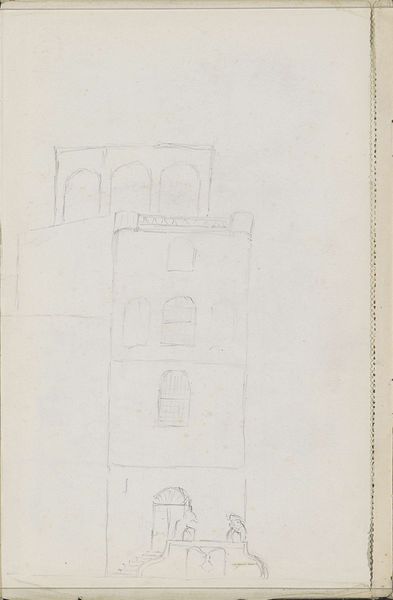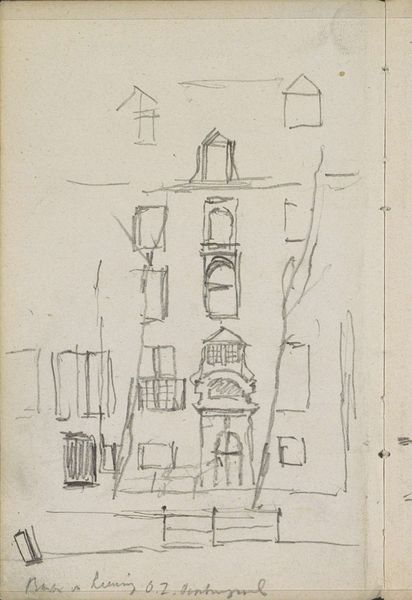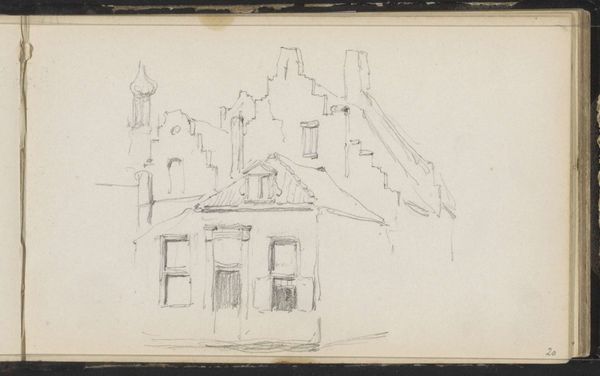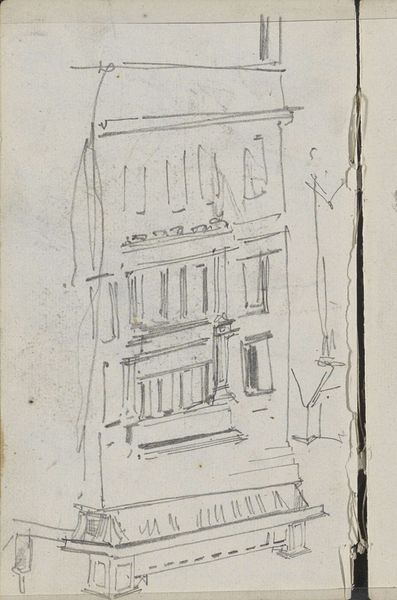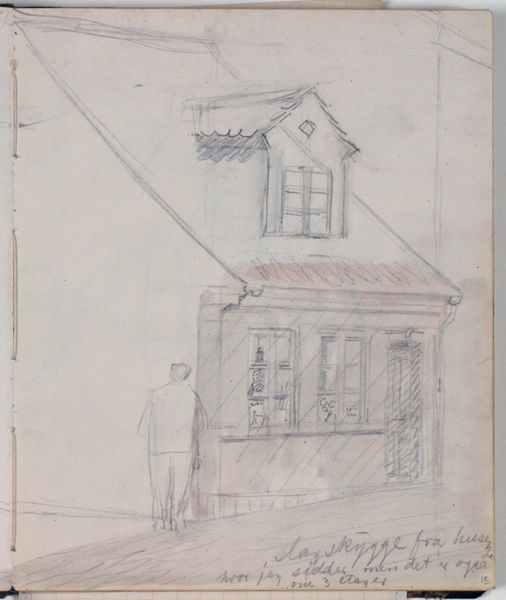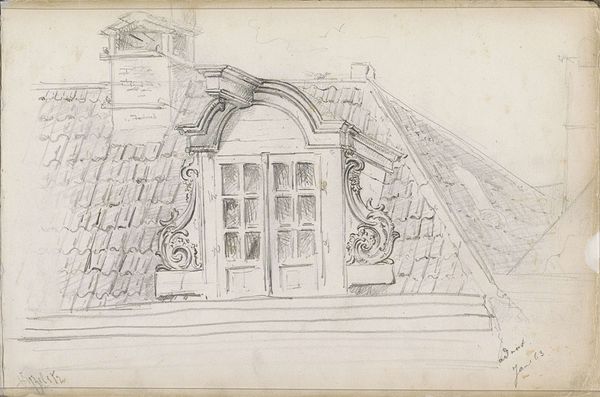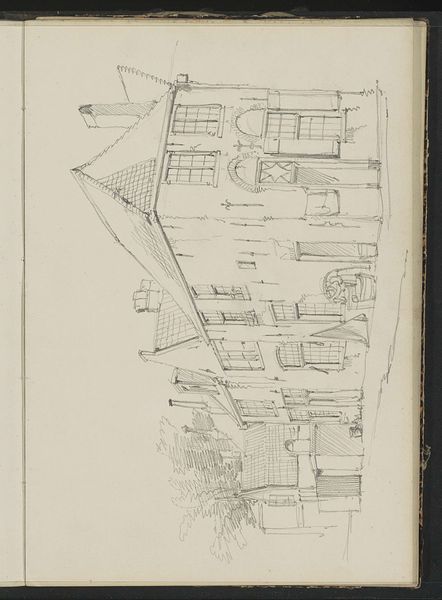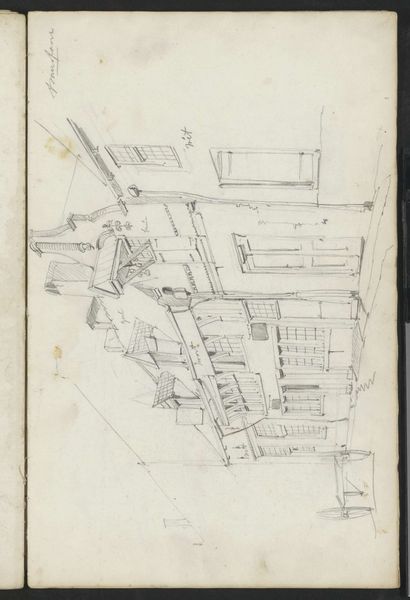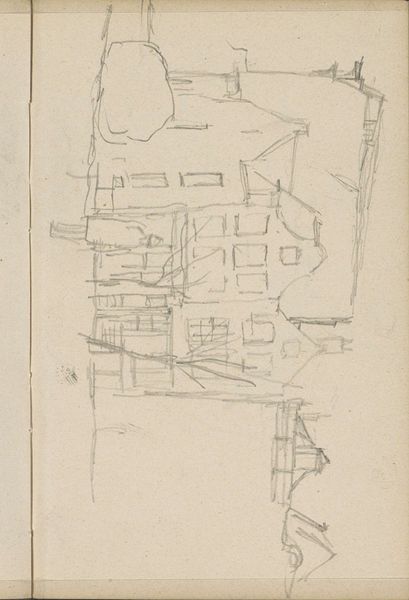
drawing, pencil
#
drawing
#
landscape
#
pencil
#
cityscape
Dimensions: 226 mm (height) x 185 mm (width) x 112 mm (depth) (monteringsmaal), 221 mm (height) x 184 mm (width) (bladmaal)
Curator: Welcome. Today, we will be discussing "Studier af bygninger. Notater," or "Studies of Buildings. Notes" by Niels Larsen Stevns, created between 1930 and 1936. It is currently held at the SMK, the National Gallery of Denmark. It's rendered in pencil in the style of a landscape, but featuring cityscape elements. What are your initial impressions? Editor: It's incredibly serene. The soft pencil strokes and the muted tones evoke a sense of quiet contemplation. The scene seems almost untouched by time. Curator: The artist’s technique is indeed very subtle. Stevns focuses on line and form here, foregoing strong contrasts and detailed ornamentation. Note how the buildings are outlined with precise strokes. We can observe the architectural structures’ essential elements and internal composition; they appear more like skeletons of structures than lived spaces. Editor: It brings up the idea of space, its relationship to power, and how architecture impacts daily lives. I see class structures implicit in this ordered setting; who are the architects? And for whom were the houses created? These questions matter, as art can unconsciously normalize hierarchies. What narrative is being emphasized or omitted through a specific compositional organization of urban space? Curator: I can see how one might arrive at such an idea. However, let's not rush into politicizing everything; this also reflects the artist’s unique observation of buildings. Note how Stevns explores a formal aspect, manipulating perspective, capturing a unique viewing angle, creating asymmetry, and, more interestingly, emphasizing volume by layering and stacking geometric masses atop each other. Editor: I don’t disagree. The lack of people makes these built spaces read as vacant, and this elicits discomfort. The focus on a specific class demographic further emphasizes its class position. So the urbanity portrayed has much to reveal from the vantage of its architecture. It’s not that architecture isn’t "just about structure," it also carries societal context! Curator: Ultimately, this drawing displays how formalistic representation can intersect with social discourse; hopefully, you now have a slightly altered view. Editor: Hopefully our listeners are left with even greater awareness! Thank you for your time.
Comments
No comments
Be the first to comment and join the conversation on the ultimate creative platform.
